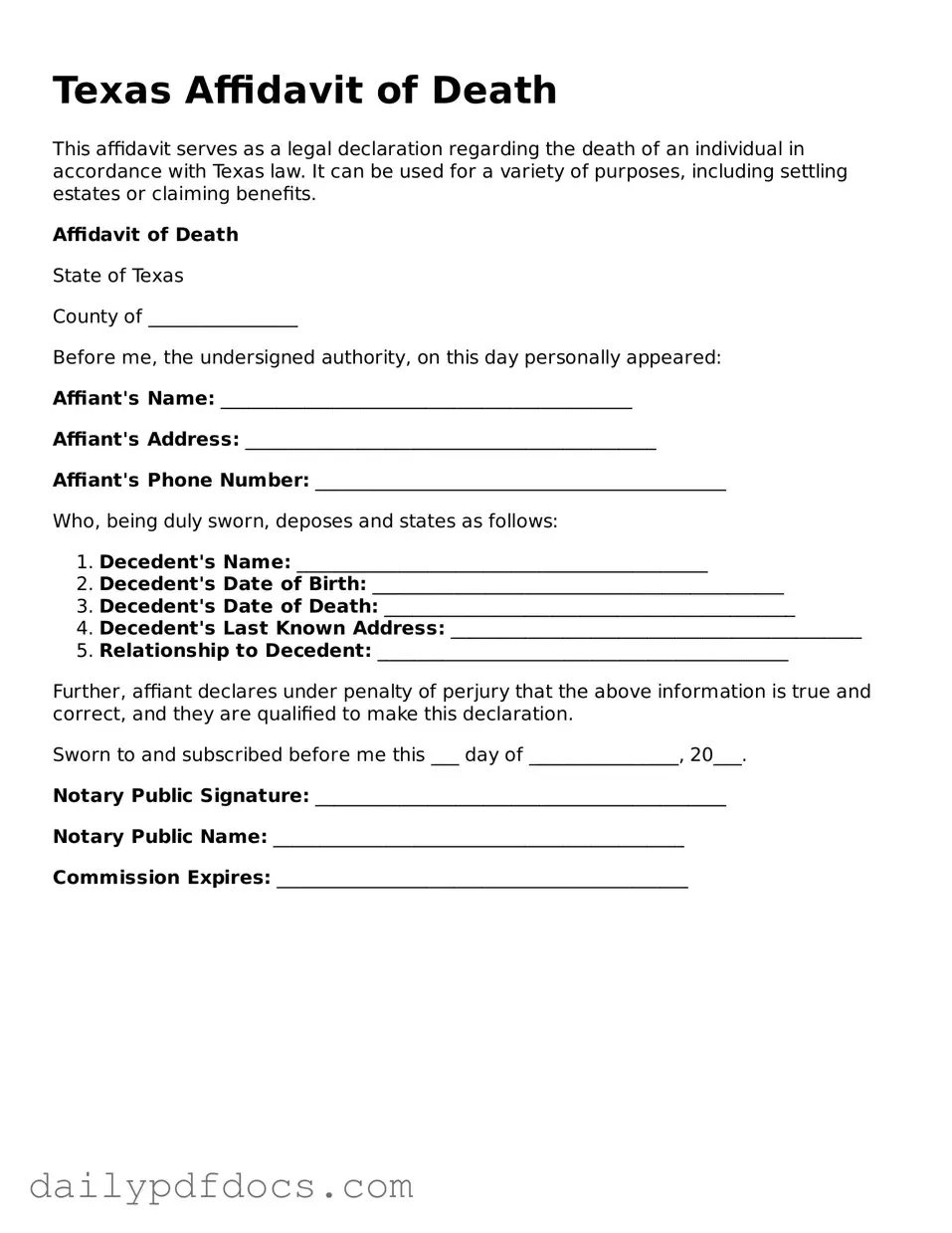What is the Texas Affidavit of Death form?
The Texas Affidavit of Death form is a legal document used to officially declare the death of an individual. It is typically utilized to transfer property ownership or to update records, such as titles and deeds, after a person's passing. This affidavit serves as a sworn statement that provides necessary details about the deceased, including their name, date of death, and relevant information about their estate.
Who can file the Texas Affidavit of Death form?
The form can be filed by individuals who have a legal interest in the deceased's estate. This often includes family members, executors, or administrators of the estate. Anyone with a legitimate reason to declare the death and manage the deceased's affairs may complete and submit this affidavit.
What information is required on the form?
The Texas Affidavit of Death form typically requires the name of the deceased, their date of death, and the address at which they lived. Additionally, the affiant, or the person completing the affidavit, must provide their own name and relationship to the deceased. Any relevant details about the deceased’s estate, such as property descriptions, may also be included.
Where should the Texas Affidavit of Death form be filed?
This affidavit should be filed with the county clerk's office in the county where the deceased resided at the time of death. Filing the form in the correct jurisdiction is essential for it to be legally recognized and to ensure that any property transfers are valid.
Is there a fee associated with filing the Texas Affidavit of Death?
Yes, there is usually a filing fee associated with submitting the Texas Affidavit of Death form. The fee can vary by county, so it is advisable to check with the local county clerk's office for the exact amount. Payment methods may also differ, so confirming this in advance can be helpful.
Do I need a notary public to sign the affidavit?
Yes, the Texas Affidavit of Death form must be signed in the presence of a notary public. The notary will verify the identity of the affiant and witness the signing of the document. This step adds a layer of authenticity and legal validity to the affidavit.
Can I use a Texas Affidavit of Death form for any type of property?
This form is generally used for real property, such as land or homes. However, it may also be applicable for other types of property, depending on the situation. It is important to ensure that the affidavit is appropriate for the specific type of property being addressed.
What happens if the deceased had a will?
If the deceased had a will, the Texas Affidavit of Death form can still be used, but it is important to follow the instructions outlined in the will. The executor named in the will may need to take additional steps to probate the will and manage the estate according to the deceased’s wishes.
Can the Texas Affidavit of Death be contested?
While the affidavit itself is a declaration of death, disputes can arise regarding the validity of the document or the circumstances surrounding the death. If there are concerns about the affidavit or the estate, interested parties may seek legal advice to address any potential challenges.
How long does it take to process the Texas Affidavit of Death?
The processing time for the Texas Affidavit of Death can vary by county. Generally, once filed, the affidavit is recorded relatively quickly. However, any subsequent actions, such as property transfers, may take longer depending on the specific circumstances and the workload of the county clerk's office.
